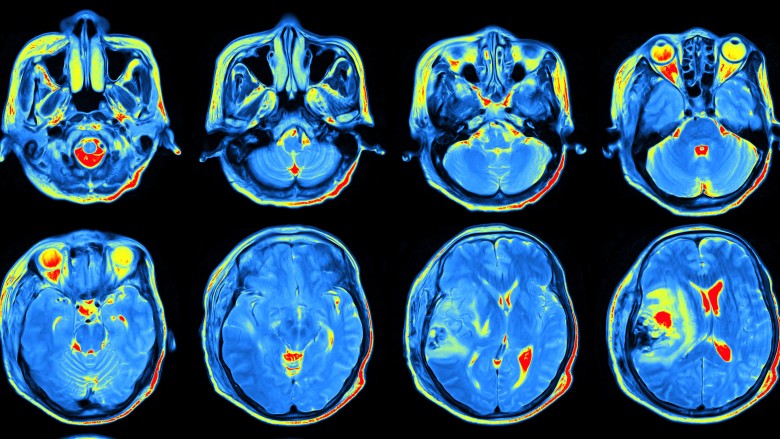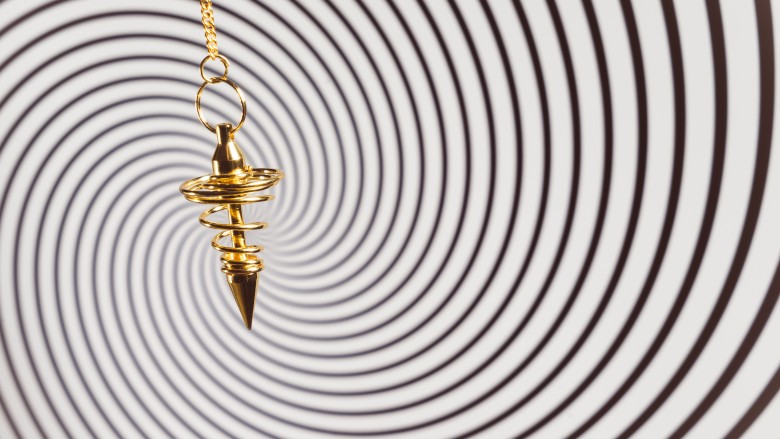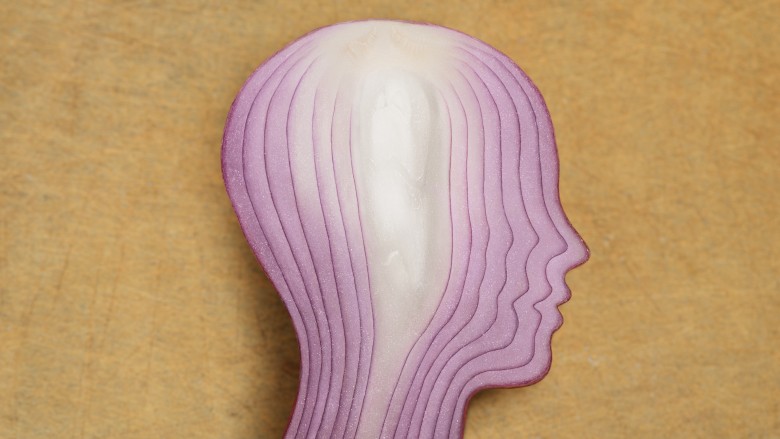What Really Happens When You See A Hypnotist
When you picture a hypnotist, maybe you imagine some vaguely evil villain swinging a pocket watch in front of a victim's eyes. But hypnotism is actually a wonderful tool used by trained therapists to try to reach and relax your mind in a different kind of way.
So, if you're thinking of trying out hypnotherapy, but aren't sure what to expect, here's what really happens when you see a hypnotist.
You are in control
If you choose to see a hypnotherapist, your appointment will begin a lot like a regular therapy session. You'll go into an office, then sit down and talk with the therapist about what you'd like to achieve in the session. Whether you're looking to reduce pain or deal with stress and anxiety, you will communicate that to your therapist so they can figure out the best way to help you. Colin Chapman, a certified clinical hypnotherapist, said, "You, the client, are the one who is in control. As a hypnotherapist, my role is to serve as your tour guide. You decide where we go. My job is just to get you there."
The idea we have of hypnosis, is that someone is controlling our minds, while really the opposite is true. It's a vulnerable feeling to let someone else guide you through a less guarded realm of your consciousness. But in reality, your therapist will only go into subjects that you want to delve into. Chapman said a hypnotist will never try to get you to divulge secrets you want hidden, or have you run around the room like a chicken for their own amusement (though if you ever jump onstage with any kind of entertainment hypnotist, get ready to look stupid).
The therapist has the professional skills to allow your mind to relax, and reveal some of the deeper roots or meanings to our problems. Plus, according to Chapman, the hypnotist will perform some demonstrations to give you an idea of how the subconscious mind works, as well as how you can expect the rest of the session to go. No matter what happens, the patient is in the lead the whole time.
You won't be going to sleep
The state of trance in which you find yourself, during a hypnotherapy session, can vary depending on a number of factors. But one thing is always true: you won't be asleep. Yes, your mind will be in a state of great relaxation, but that's not the same as drifting off under the covers at night. The hypnotist is merely suggesting a change in feeling, behavior, and perception of yourself and your surroundings.
According to the American Psychological Association, most people find hypnosis to be a pleasant experience that they liken to a calm and relaxed feeling, though their mind is in a state of pure focus. Personally, I know I'm not anywhere near a state of focus when I'm drooling on my pillow, and though sleep and hypnosis used to be considered the same, contemporary science notes that a hypnotic trance is all about focus, not just mind and body relaxation, or sleep.
Hypnotherapy Explained also posits that falling into a deep, deep trance doesn't always make for a better session. Since everyone experiences hypnosis differently, many achieve better results with a much lighter trance.
Your brain becomes more focused
If hypnotism still seems like a silly parlor trick, know that it has been studied and has scientific evidence of efficacy. Professor and associate chair of psychiatry and behavioral sciences, David Spiegel, MD, performed such a study at Stanford University. He's a longtime defender of hypnotism, and said, "Hypnosis is the oldest Western form of psychotherapy, but it's been tarred with the brush of dangling watches and purple capes." Though there were studies about the effect of hypnosis, Spiegel realized there'd never been any study done about what happens to the brain during hypnosis itself. So, Spiegel and Stanford rectified that and performed functional MRI's on hypnotized patients to see what really happens.
The study did find that people range from highly susceptible to hypnosis, to those that just can't be hypnotized. So, there's a chance hypnosis just won't have any effect at all for you, and that's okay. But, when they performed a scan on those highly susceptible patients while they were in a trance, they saw how the brain actually changed during hypnosis.
According to the Stanford publication on the study, they found "a decrease in activity in an area called the dorsal anterior cingulate." In case you didn't study neuroscience — and Lord knows I didn't — this means that your brain becomes focused on the act of hypnosis and doesn't worry much about anything else. Secondly, there was a big increase in the brain-body connection, meaning the brain had even greater control over the body. And lastly, there was a decrease of functional connectivity. In simpler terms, it means during a trance, you experience a disconnect between your actions and your own awareness of your actions.
Have you ever had a busy morning where you get in the car and realize you don't fully remember how you got there? I'm not talking about any scary blacking out, but sometimes for everyday tasks, our body performs actions that our mind is completely unaware of. That feeling is amplified during hypnosis. That's why you sometimes won't remember everything during a session because you're purposefully less aware of your actions, so that your mind can maintain a greater focus.
It feels a little like reading a really good book
Explaining hypnosis by talking about the lack of functional connectivity, or throwing out fancy phrases like "dorsal anterior cingulate," doesn't really paint a clear picture of what hypnosis really feels like. Sure, it's not sleeping, but what is it then? Well, Vera Peiffer, a psychotherapist and hypnotherapist, offered some similar real life experiences to hypnosis in her book, Principles of Hypnotherapy.
In her writing, Peiffer compares it to the feeling of reading a book that's so good, you forget where you are, or lose all track of time. Or, like the way in which you might stare into space while thinking intently, but not really absorbing what is physically in front of you. It can also be like going to a concert or live performance that leaves you feeling kind of high, even if you haven't touched any drugs or alcohol. If you've ever had any of those things happen — congratulations, you were hypnotized! She goes on to say, "When you are staring out of your window as you are daydreaming, you still know that you are sitting in your living room, but this information is not very important while you are in the process of pursuing your thoughts." Hypnosis is actually something we all experience. We just don't usually think of it in those terms.
You won't watch swinging clocks or swirly spirals to get into a trance
At this point, you can probably guess that the way in which something like Looney Tunes portrays hypnosis probably isn't all that accurate. But if they don't swirl something in front of your eyes, or swing a watch back and forth, what does induce hypnosis? According to hypnotherapist Dan Jones in his book Hypnotherapy, a hypnotist employs a few different methods. For one, they can invite the client to focus on something specific. This doesn't even have to be a visual focus, but instead, guiding the client to simply place all their focus on one emotion or idea. This "narrowing of attention" is required for all states of trances, but some people can be hypnotized simply by a request to focus.
If the request to focus isn't enough, hypnotists can also use rhythm in their speech, or by drumming a pattern, to guide people into a trance. Also, having a person imagine a scenario or a solution to a problem, or recall a vivid memory is another way to allow the person to narrow their attention. Lastly, a therapist could use gentle touch or use repetitive movements to induce hypnosis. This is where the old swinging watch idea comes from, using the repetitive swing to lull someone into a trance. Though that tool was used in classical hypnosis, it's almost never used today.
Your subconscious will be engaged
People sometimes choose to hypnotherapy because they want to try a different method to address some of their emotional problems. Jones writes in his book, Hypnotherapy, that psychological problems already involve their own kind of trance. We get trapped in a pattern of negative thoughts, or stuck in one way of thinking, and we're not able to see things from multiple perspectives. Which is it's own kind of trance state.
Since hypnosis can reach the subconscious directly without our logical thoughts or defenses getting in the way, it can break those negative cycles. So, sometimes it's necessary to go into a trance to get out of a trance. Sure, that sounds pretty weird, but the basic idea of bypassing your logical mind to get the roots of your unwanted behavior is a compelling theory.
Hypnosis may be able to relieve pain
People don't look to hypnotherapy for purely emotional reasons. It can benefit you physically as well. Way before any modern anesthetics, hypnosis was sometimes used on patients in surgery. Surgeon James Esdaile wrote a study in 1846 about 345 operations he performed where he used Mesmerism (an early term for hypnosis) as the sole form of anesthesia. During this time, surgery was rarely used because it was so physically and mentally traumatizing for the patients, if they survived the surgery in the first place. Also in his book, An Introduction to Hypnosis & Hypnotherapy, Esdaile concluded that with Mesmerism, the mortality rate from surgery went from fifty percent to five percent. His findings were thoroughly investigated and found to be valid. Unfortunately for Esdaile, chloroform was introduced right around the same time and doctors chose the chemical anesthetic over the mental one.
Though I might not be thrilled to go under the knife with nothing but a person suggesting "my eyelids are getting heavy," those results from the 19th century do show the potential for hypnosis as pain relief therapy. In the aptly titled Hypnosis in the Relief of Pain, authors Ernest R. and Josephine R. Hilgard, detail how hypnosis can relieve all kinds of physical discomforts, from pain associated with cancer, to phantom limb pain (the sensation amputees feel where their limb used to be). Even migraines can be helped with a bit of hypnosis. The authors cite a study where out of a pool of 90 people suffering from terrible migraines, 30 percent felt no relief, 32 percent found moderate relief, and 38 percent had their migraines go away completely. In subsequent tests, the rates of success were about the same.
You could remove or recall certain memories
The idea that you automatically don't remember anything that happens during hypnosis isn't true, though again, it varies from person to person. Some people won't remember anything, some remember parts, but the majority of people remember the full session clearly. Still, hypnosis and memory have an interesting relationship. It is possible for a hypnotist to help you forget certain memories, then recall them again, both with ease.
Avi Mendelsohn tested this phenomenon. He had a group of people who experienced posthypnotic amnesia and a group that did not. Both groups watched a movie, and a week later they were hypnotized, put in a functional MRI, and one group was cued to not remember the film. The group told not to remember, performed much more poorly when asked about the film, than did the group without the suggestion. Yet, when both groups were asked about the conditions in which they saw the movie (where they were, what day it was, things like that) both groups performed the same. Then, once given the cue to remember again, and the group that previously performed badly in questions about the film, now answered them just as well as the control group.
Mendelsohn's study proved that people can forget things without really forgetting them forever, with the MRI results providing insight into the specific parts of the brain involved in different types of memory retrieval. Though there aren't a ton of practical applications for this yet, it could lead to people to be able to recall long repressed memories. It also generally gives scientists a better idea of where memory and the brain connect. In the meantime, if you want a hypnotist to make you forget some super embarrassing moment from high school, they could probably do that for you.
You can learn to hypnotize yourself
If you'd like to experience the benefits of hypnosis but don't have the money or time for regular therapy, you can learn to hypnotize yourself. Self-hypnosis can help change your mood, alleviate anxiety, or help you deal with emotional challenges. Katie Abbott, a cognitive hypnotherapist shared in The Guardian, some tips for getting yourself into a trance.
Abbott asks you to breathe slowly, and with each breath say something about how you want to feel, such as, "content," "relaxed," or "energized." Conjure up a happy memory from your past. Try to remember it in great, specific detail. Then, add additional details to make the place as comforting as possible. If you do this for three to five minutes at a time, a few times a week, you may feel your mood change, anxiety lessen, and even feel a greater physical freedom than before your session. You may not be able to access your deep subconscious or break firmly held thought patterns on your own, but you can begin to alter your thinking or at least bring some peace to your day with a moment of self-induced trance.
You might recognize that self-hypnosis is a lot like meditating. But instead of trying to clear your mind, or take your focus off of your thoughts, you're narrowing your focus to one very specific point. If you try it, it might not feel like the hypnosis you see in some magic show, but you'll probably feel a difference when it's done.
It might not work for you
If you're experiencing extreme depression, anxiety, or mood and emotional problems, it's important for you to see a therapist or psychiatrist before trying hypnosis. Or if you have a physical problem that hasn't been treated by a medical professional, get that taken care of first before going into a trance. That's not to say that hypnosis is ineffective, it's just best to make sure that there isn't a basic physical problem or clinical depression that could be relieved more effectively by traditional medical means.
Michael Yapko, PhD, a fellow of the American Society of Clinical Hypnosis said, "Hypnosis works and the empirical support is unequivocal in that regard. It really does help people, but hypnosis isn't a therapy in and of itself. Most people wouldn't regard it that way." The publication by the American Psychological Association continues, saying that hypnosis works well for reducing pain and alleviating depression, but all the easy-to-buy hypnosis tapes, and claims it can make you stop smoking, aren't so effective. A study by Joseph P. Green, PhD, a psychology professor at Ohio State University at Lima, found that hypnosis was better than no treatment, to aid in quitting smoking, but no more effective than any other smoking-cessation method.
It's not so scary after all
Though hypnotherapy shouldn't be used as a solitary treatment, it's a fascinating way to delve deeper into your own mind. If you'd like to try it, make sure you visit a licensed hypnotherapist and don't just pick the cheapest person on Groupon.
Whether you want to run out and try it, or read up a little more, now you know that hypnotism isn't some scary form of mind control. It's simply a method of focus and concentration that bypasses some of our swirling, negative thoughts. Even so, I'm not gonna be the first to volunteer to be hypnotized at a State Fair show...that's just going to end up on YouTube.











